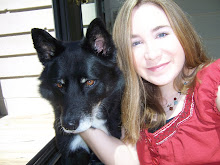The same issues of Orphan Works that are being legislated in the U.S. are also being brought up in other parts of the world. The MILE project has already started an orphan database for images and shows some resolved Orphan Works claims.
For those of you that are not familiar with what MILE is, it stands for Metadata Image Library Exploitation. The first sentence on their main page explains that their project “aims to promote European cultural heritage and make digital art more accessible by improving metadata.” I was wondering why they chose the name for the project other than it creates an appealing acronym? Although according to www.m-w.com exploit has two distinct definitions, I always think of the negative connotation first. I am sure the MILE project wants to help make images accessible for productive use, but how can they prevent the use of images in a mean and unfair way for one’s own advantage?
There are many pros and cons that are an issue regarding the use of Orphan Works. As I have tried to learn the perspective from an artist’s point of view, it seems that they are worried about what this means for their art. On the www.illustratorspartnership.org website there are a lot of good points about the bills that seem as though they are going to be passed in the U.S. There is a good explanation about how they will be required to register their work with image-recognition databases. The artist will be responsible to pay for this to be done and some artists have an enormous amount of unpublished and published work. To make sure none of an artist’s works are orphaned they will be required to place it in a registry.
After reading more on the Illustrators Partnership of America (IPA) website, I definitely see a different view of the bills about to be passed in the U.S. IPA explains in a different way about how these orphan works may be used. IPA also discusses how it is the person who wants to use the work (the “infringer”) that has to perform a reasonable diligent search. Who decides whether the search has been reasonably diligent? The person performing the search, according to the IPA
There is talk about how there should be a database for these reasonably diligent searches of copyright owners. This would be a good idea because it would be out there for everyone to see and be something that can be used if needed in the future if issues arise. A more precise idea of what a diligent search would involve, and maybe the word reasonable could be taken out of the wording in the bill.
It definitely seems if there are going to be databases created; there should be separate ones for different types of orphaned works, as the MILE project is attempting to do for images. Another point I am not clear on is how the user will pay for the use of an orphaned work? It has been said that it would be free, but if the image is found on a database of orphaned works it would seem there would need to be some type of money involved to keep these databases up and running. Maybe a separate fee for use of the database could be decided? Then would this fee be taken into consideration if a owner of the work appears after the use of the work and wants compensation for that use? There are so many issues that come up involving orphaned works, no wonder it has been in legislation for so long.
References:
http://mileproject.eu/
Tier, J. & Bramley, C. (2009). “Orphan Works and the MILE Project.” Multimedia
Information and Technology, 35(1), 29-32.
Subscribe to:
Post Comments (Atom)

1 comment:
Again another great post. I like that you went international here. I also thought your mention of object recognition technology is fascinating. I did a paper for a class last year on Google Similar Images (a tool currently being beta'd in their labs), and I wonder if that tool could eventually be used to search for information about images to determine if they are orphaned works. Your point towards the end that the databases themselves might not be free was also a good catch.
Post a Comment